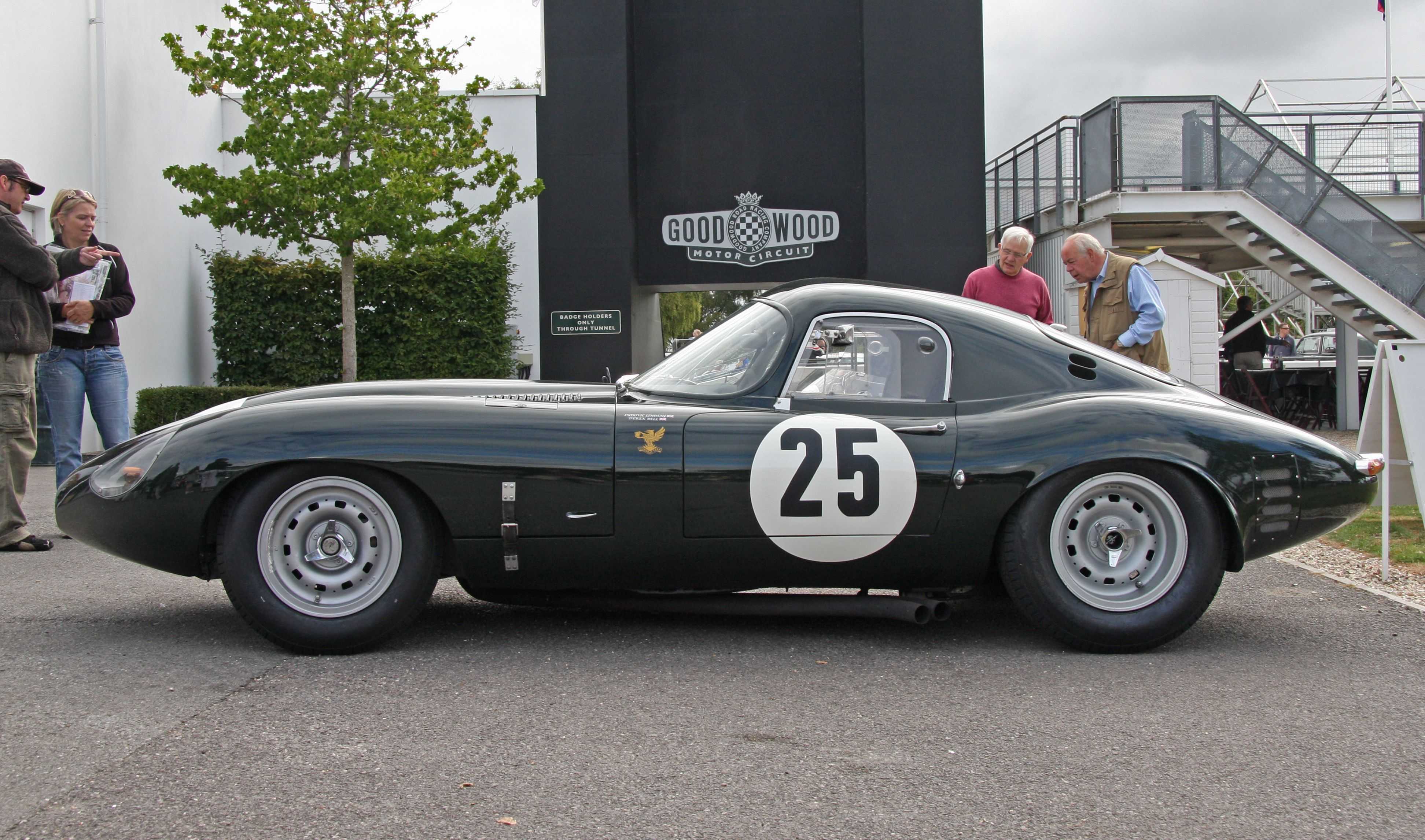1963 Jaguar E-Type Lightweight

The descriptions of the Classic Cars in the Directory were partly generated or supplemented with the help of artificial intelligence (AI). The content may occasionally not always be entirely accurate or factually correct despite careful checking.
The 1963 Jaguar E-Type Lightweight is a rare and highly desirable sports car that embodies the elegance and power of British engineering. As the name suggests, this model is a stripped-down, lightweight version of the iconic Jaguar E-Type, designed specifically for racing and high-performance driving.
At the heart of the Lightweight E-Type is a powerful 3.8-liter straight-six engine, capable of producing 300 horsepower and propelling the car from 0 to 60 miles per hour in just 5.1 seconds. The engine is mated to a four-speed manual gearbox, featuring synchromesh on all forward gears for smooth shifting at high speeds.
One of the most distinctive features of the Lightweight E-Type is its aluminum body, which was handcrafted by the renowned coachbuilder, Abbey Panels. The lightweight bodywork reduces the car's overall weight by approximately 250 pounds compared to the standard E-Type, improving its handling and responsiveness on the track.
The suspension system on the Lightweight E-Type has been upgraded from the standard E-Type, featuring stiffer springs, adjustable dampers, and a reinforced rear axle. These enhancements provide greater stability and control, enabling drivers to push the car to its limits without compromising safety.
In addition to its mechanical upgrades, the Jaguar E-Type Lightweight also features a number of aerodynamic enhancements designed to improve its performance on the track. These include a large rear spoiler, a low hoodline, and a streamlined nose cone, which reduces wind resistance and increases downforce.
Inside the car, the Lightweight E-Type is spartan and functional, with only the essentials needed for high-performance driving. The driver and passenger sit in lightweight bucket seats, and are surrounded by a steel roll cage for added protection in the event of an accident.
Overall, the 1963 Jaguar E-Type Lightweight is a rare and exceptional sports car, designed with an uncompromising focus on performance and track-readiness. With its powerful engine, lightweight body, and advanced suspension and aerodynamics, it remains an icon of British engineering and a coveted prize among car collectors and racing enthusiasts alike.
Milestones
- First announced in February 1963 - Only 18 units were produced, based on E-Type Series 1 - Designed for racing with lightweight aluminium body, improved suspension, and a more powerful engine - Weight reduced by over 150kg compared to the standard E-Type - First unit, registration number 4 WPD, debuted at the 1963 Tourist Trophy at Goodwood - The Lightweight E-Type's racing career was short-lived due to the emergence of the Ford GT40 - Despite relative lack of success on the track, the Lightweight E-Type gained a reputation as a highly desirable and collectable model - In 2014, Jaguar announced the creation of six "continuation" models to complete the originally intended production run of 25 units.Technical
- Lightweight aluminum bodywork - Twin-cam, 3.8-liter six-cylinder engine - Dry-sump lubrication system - Weber 45 DC03 carburetors - Four-speed manual transmission - Independent suspension with coil springs and torsion bars - Four-wheel disc brakes - Rack and pinion steering - Top speed of 150 mph - Acceleration from 0 to 60 mph in 6.2 seconds - Designed for racing with minimal interior features - Limited production run of only 12 cars